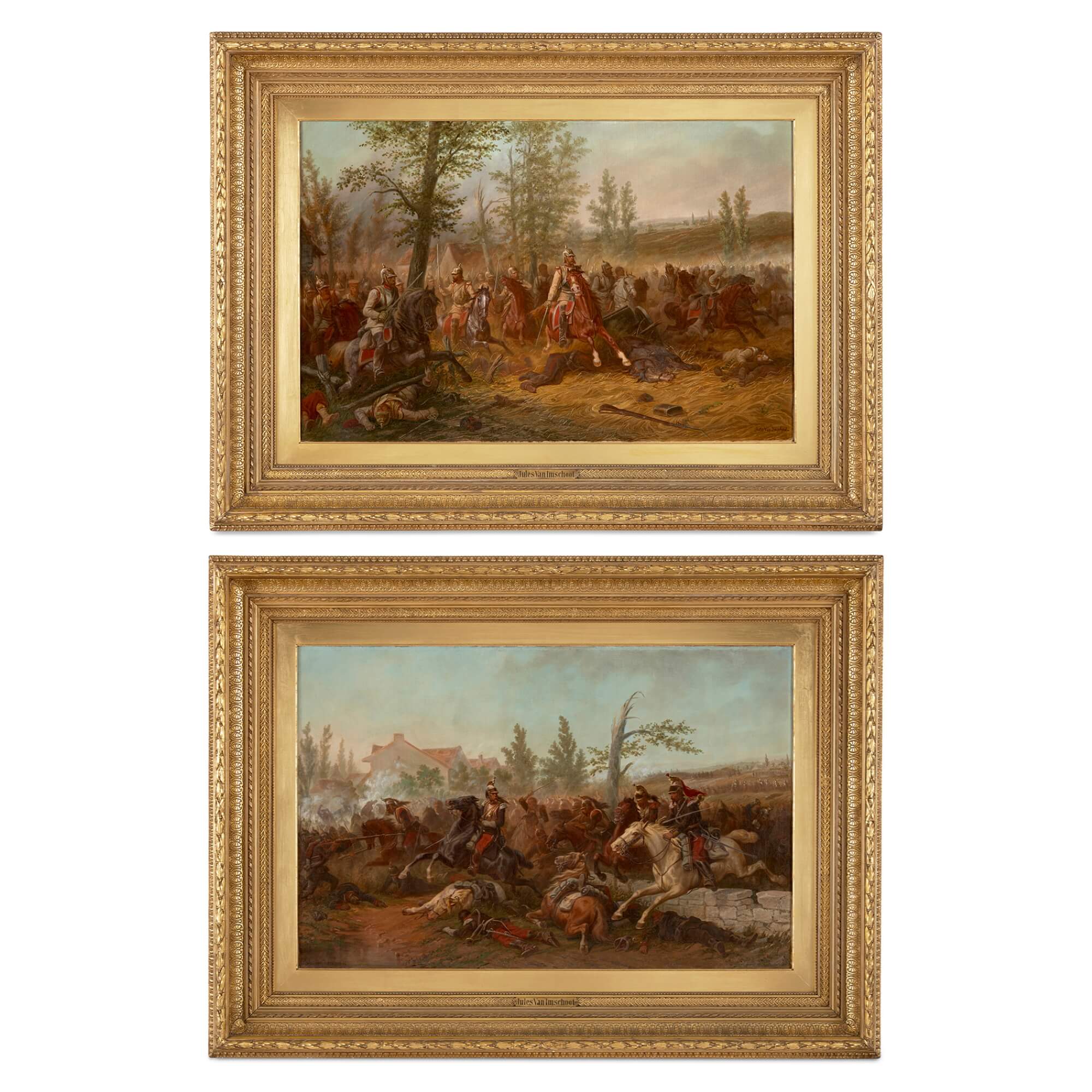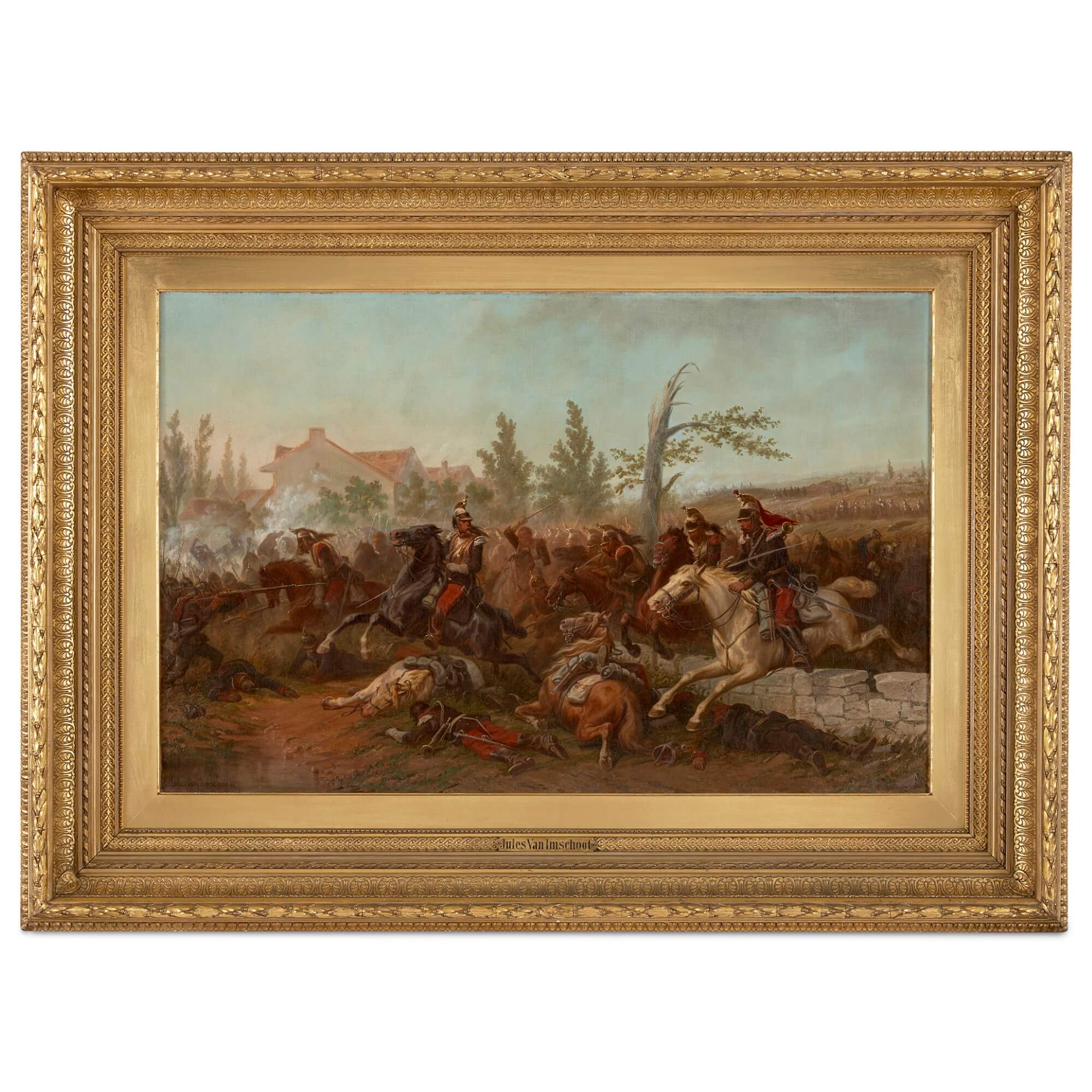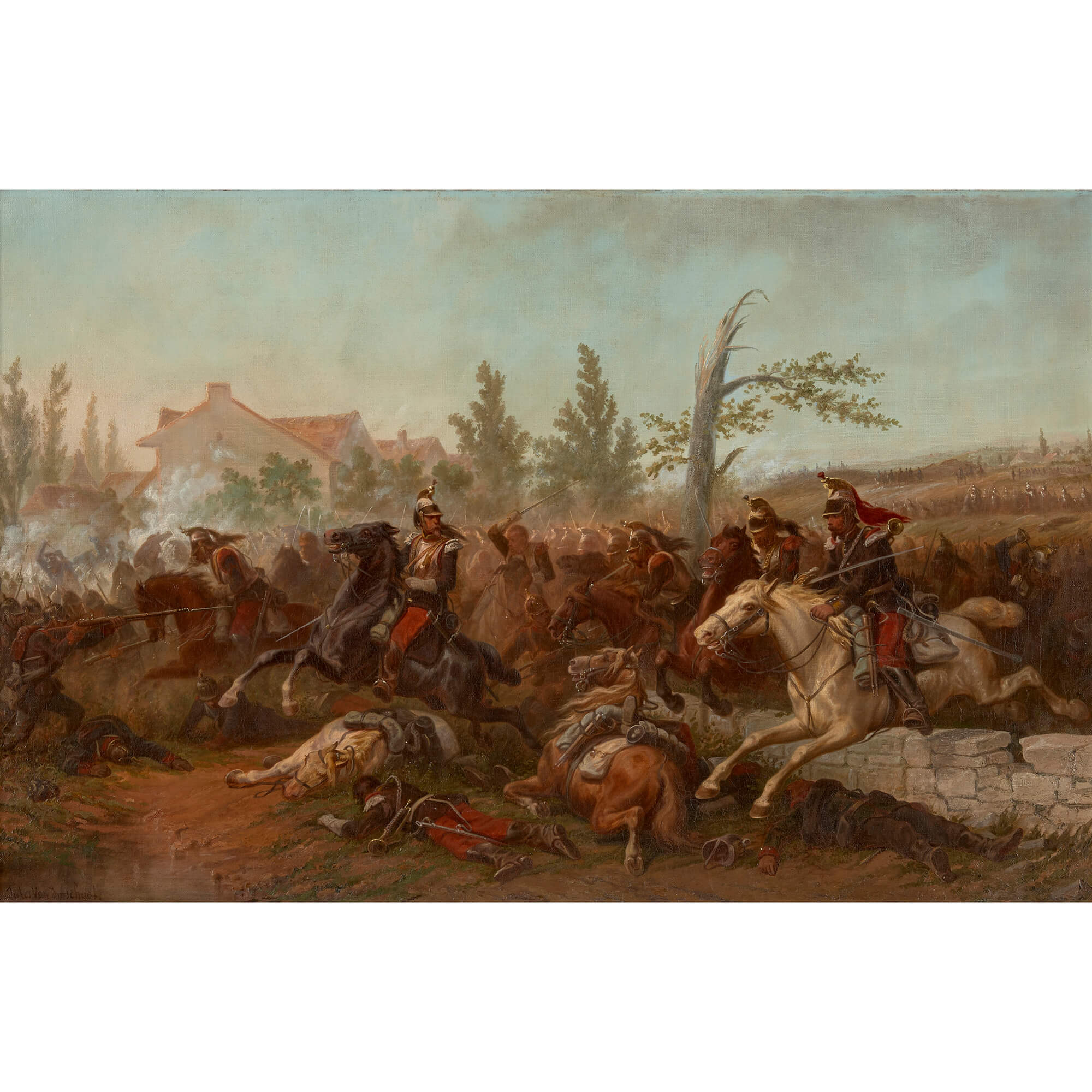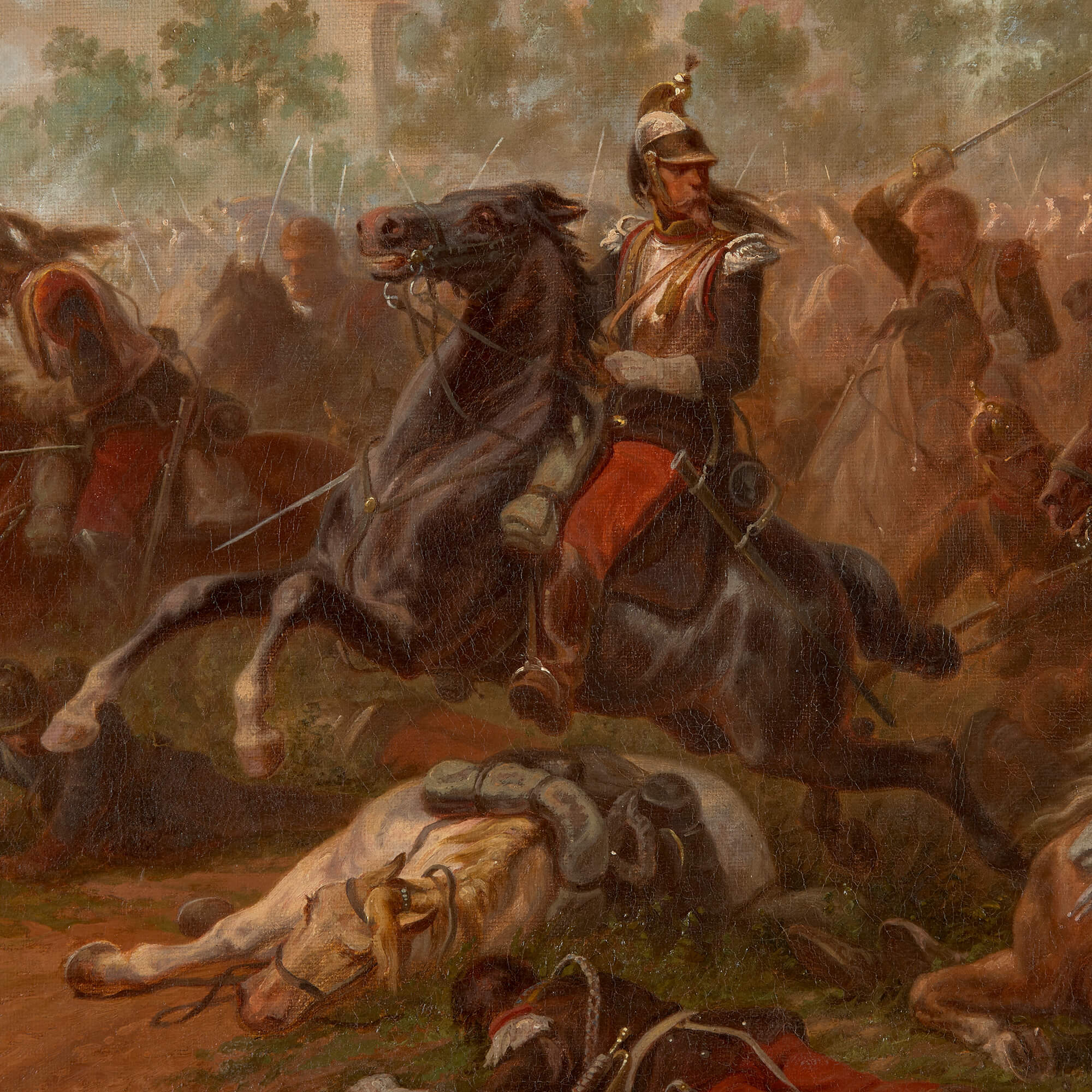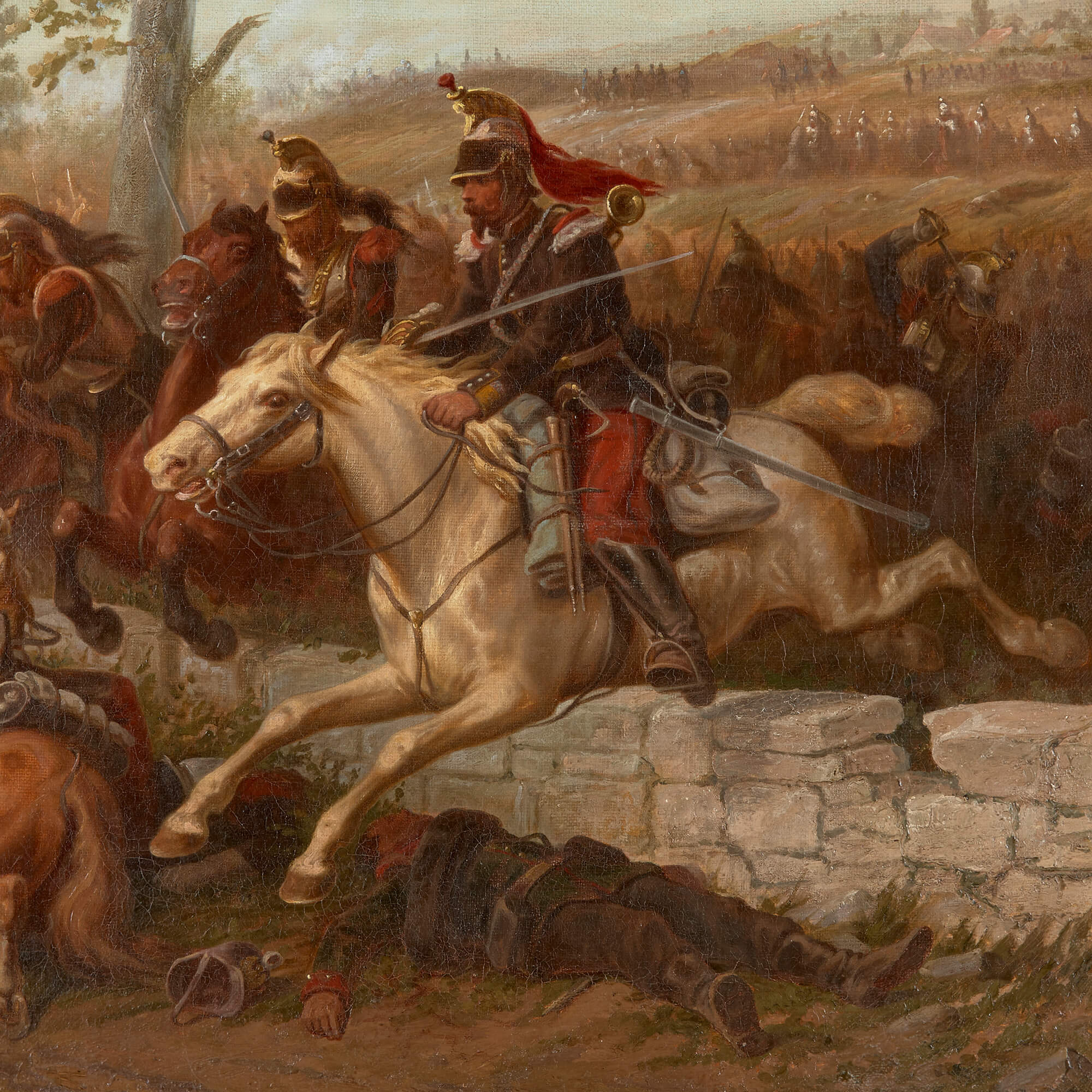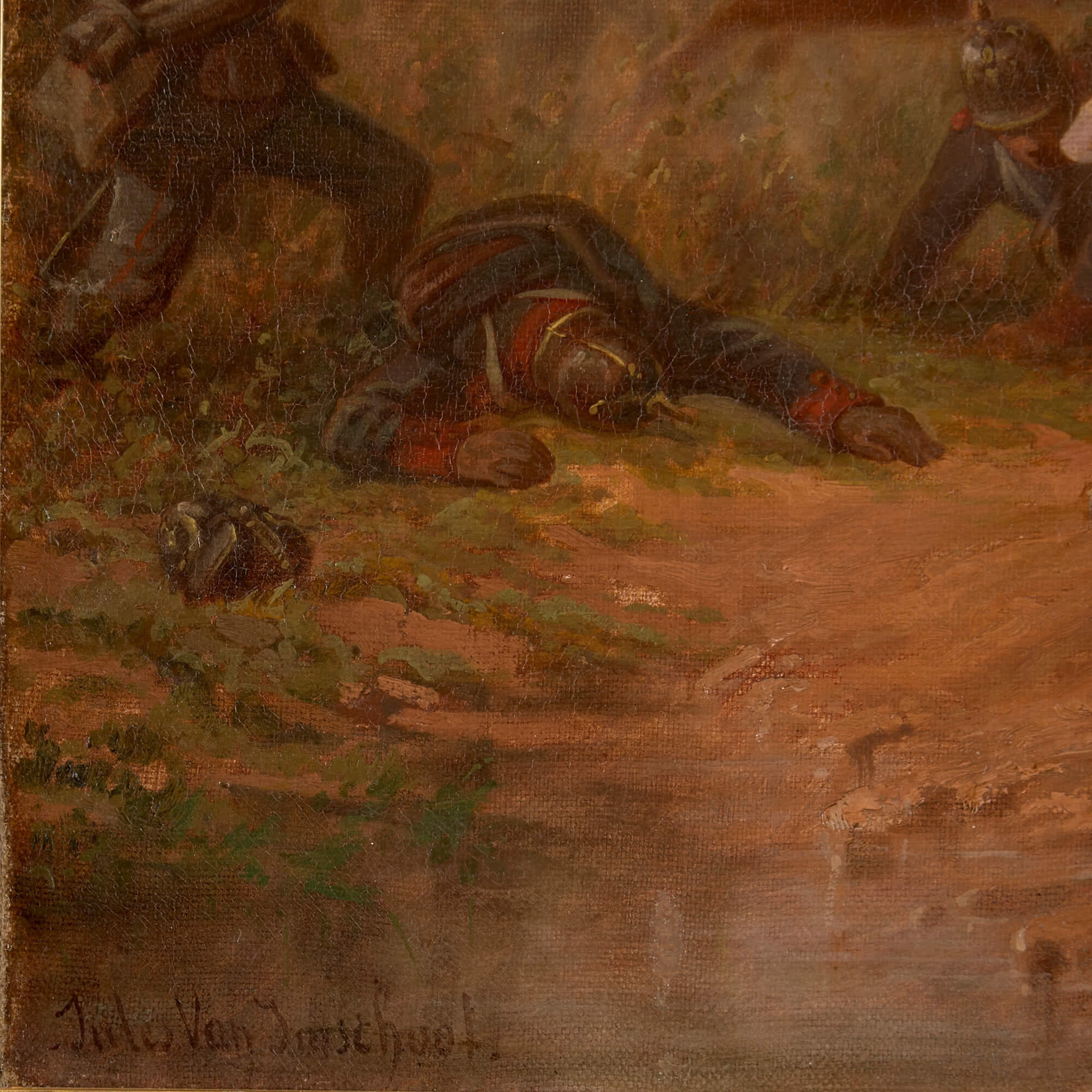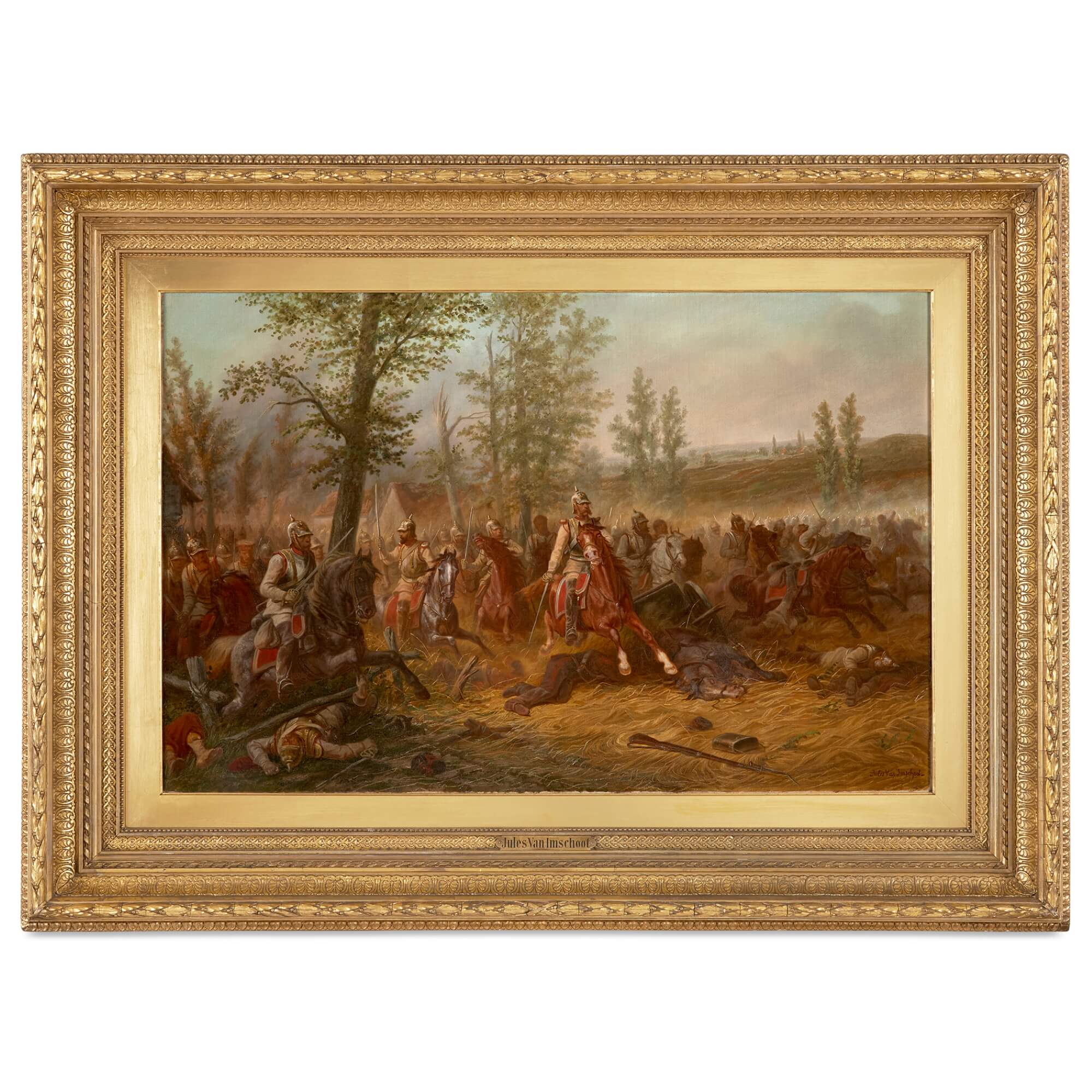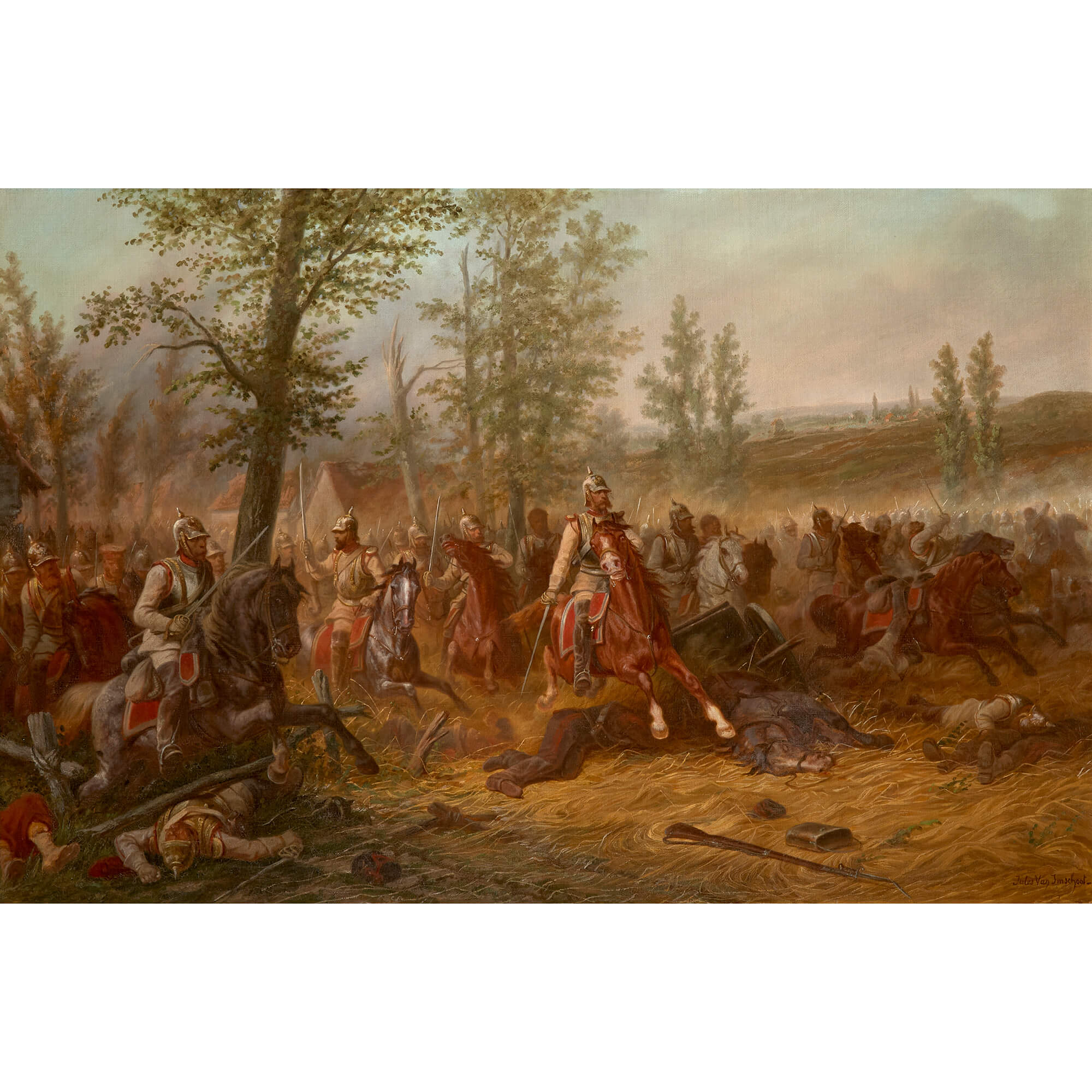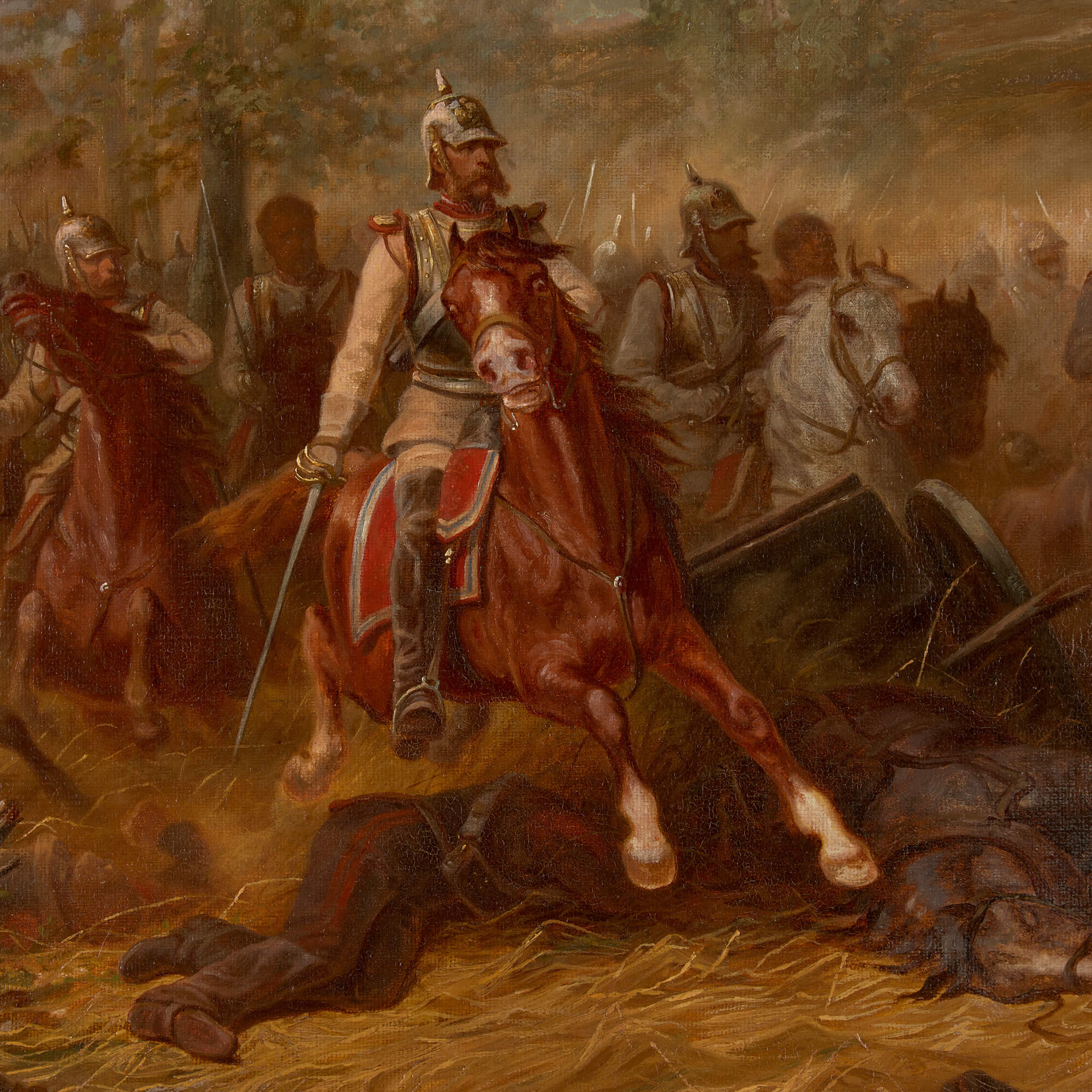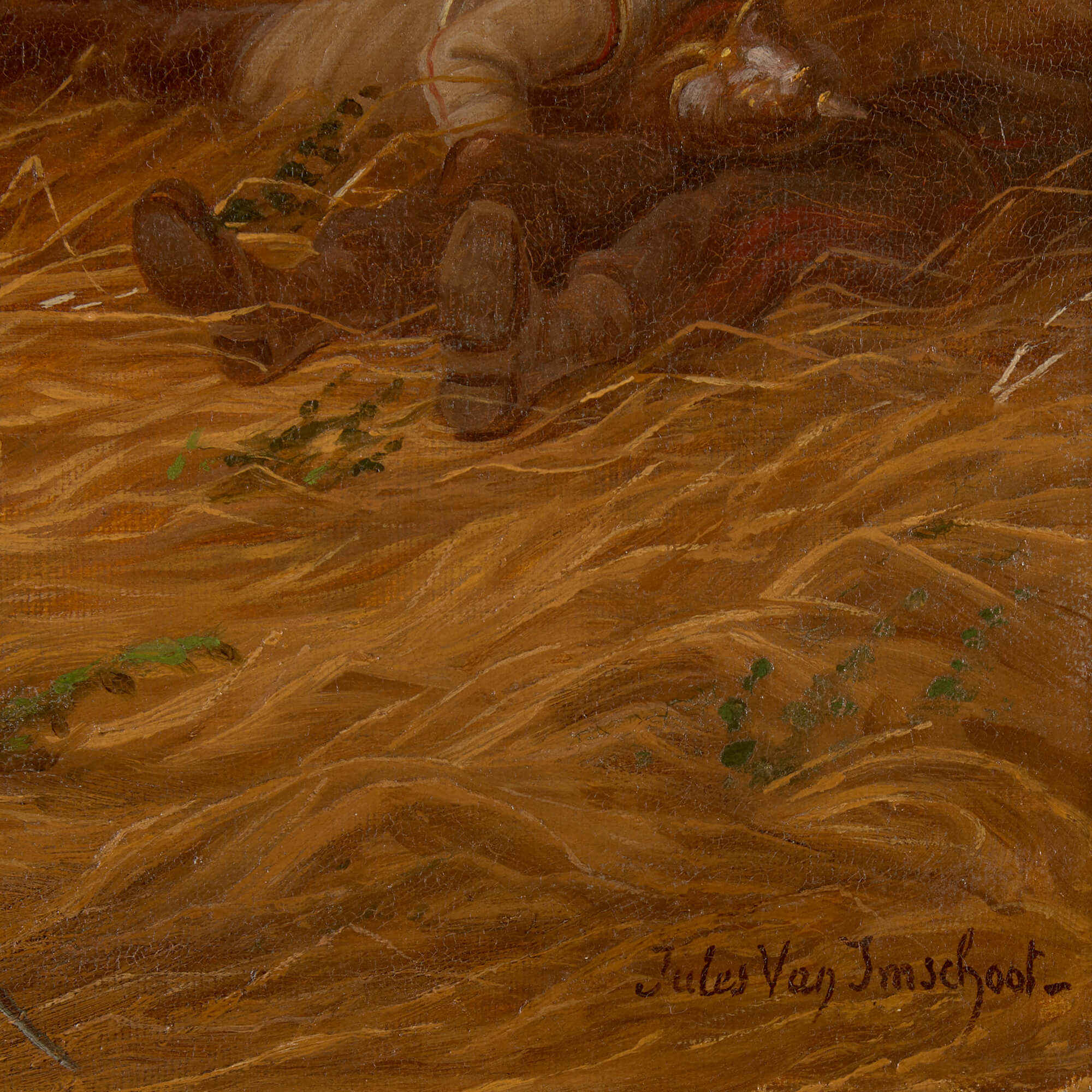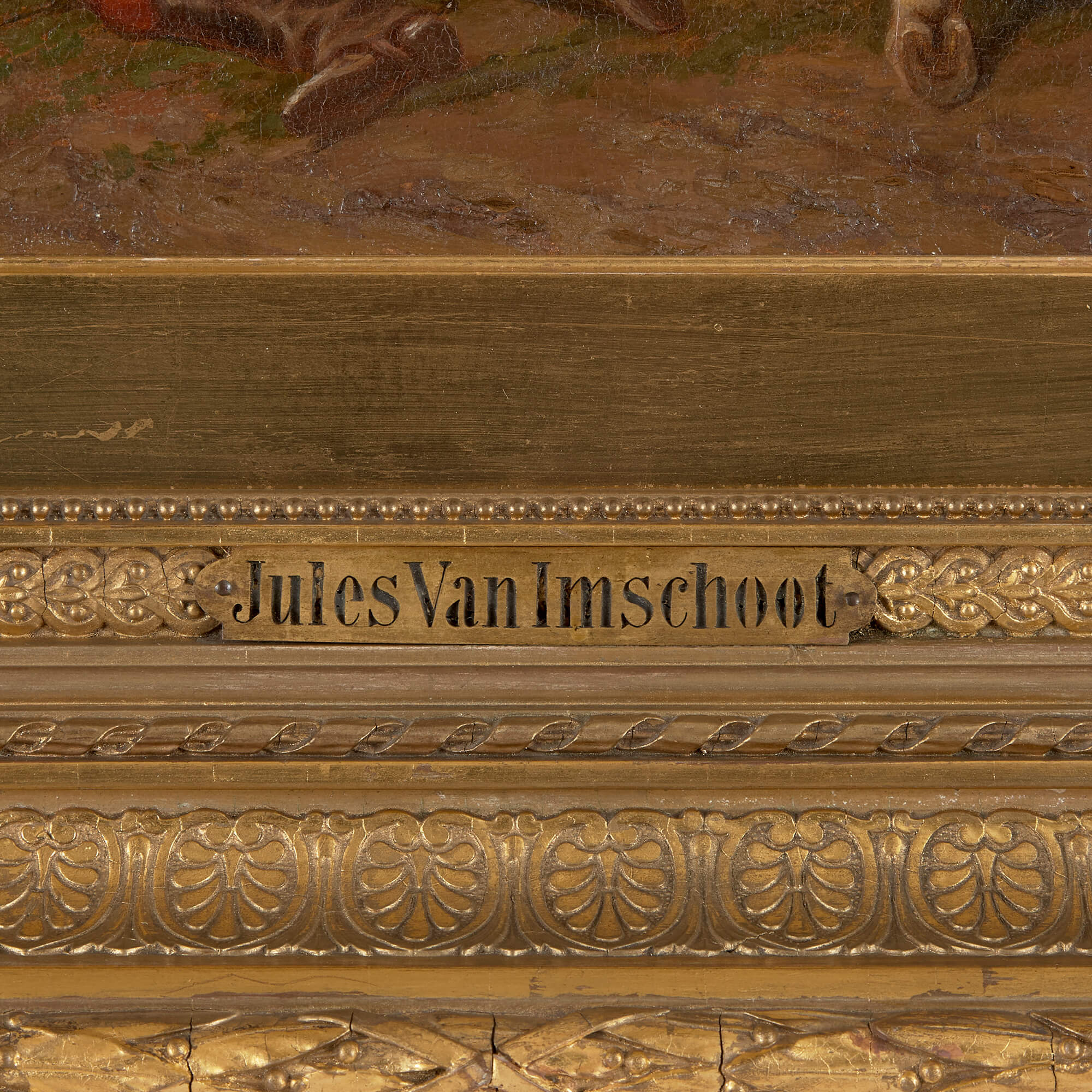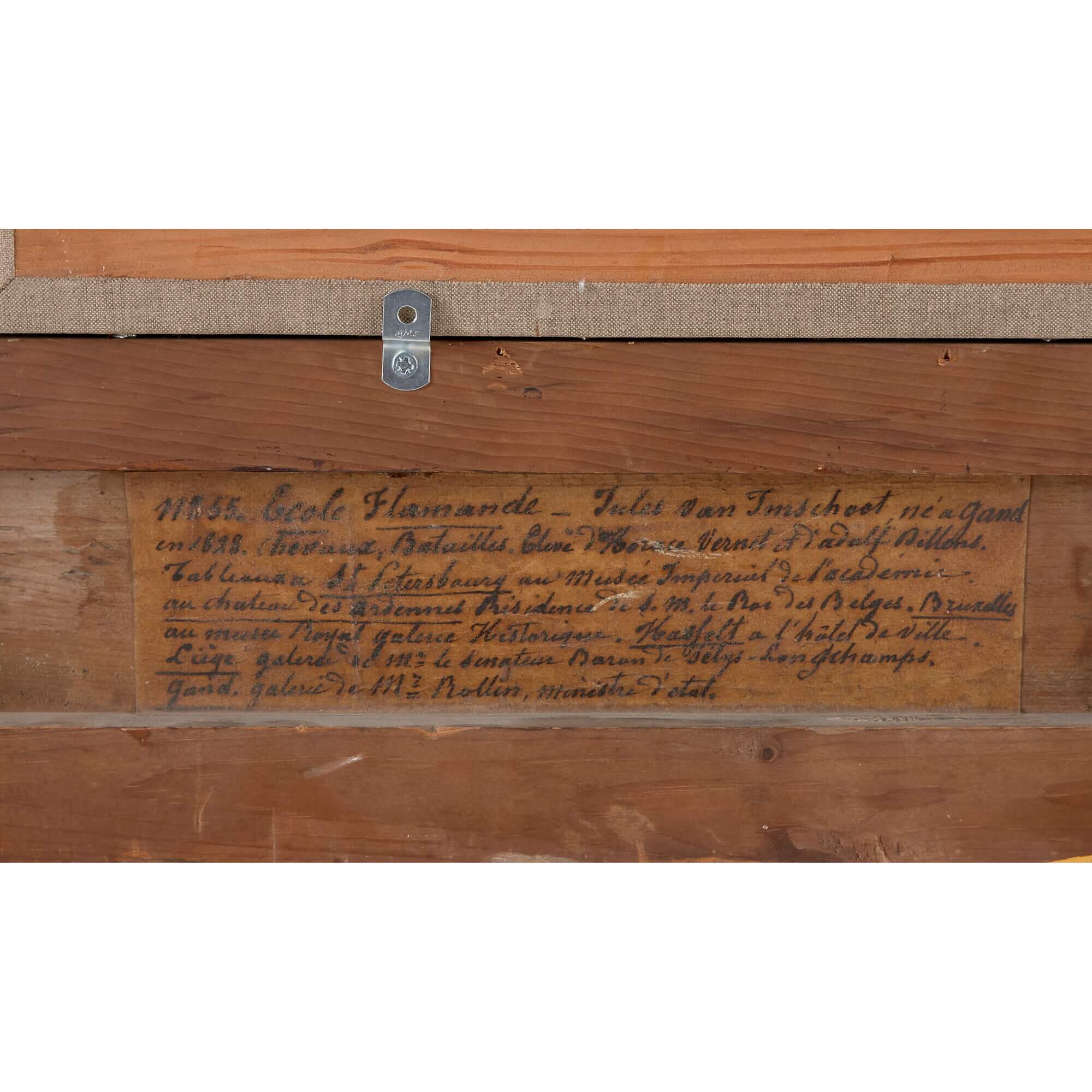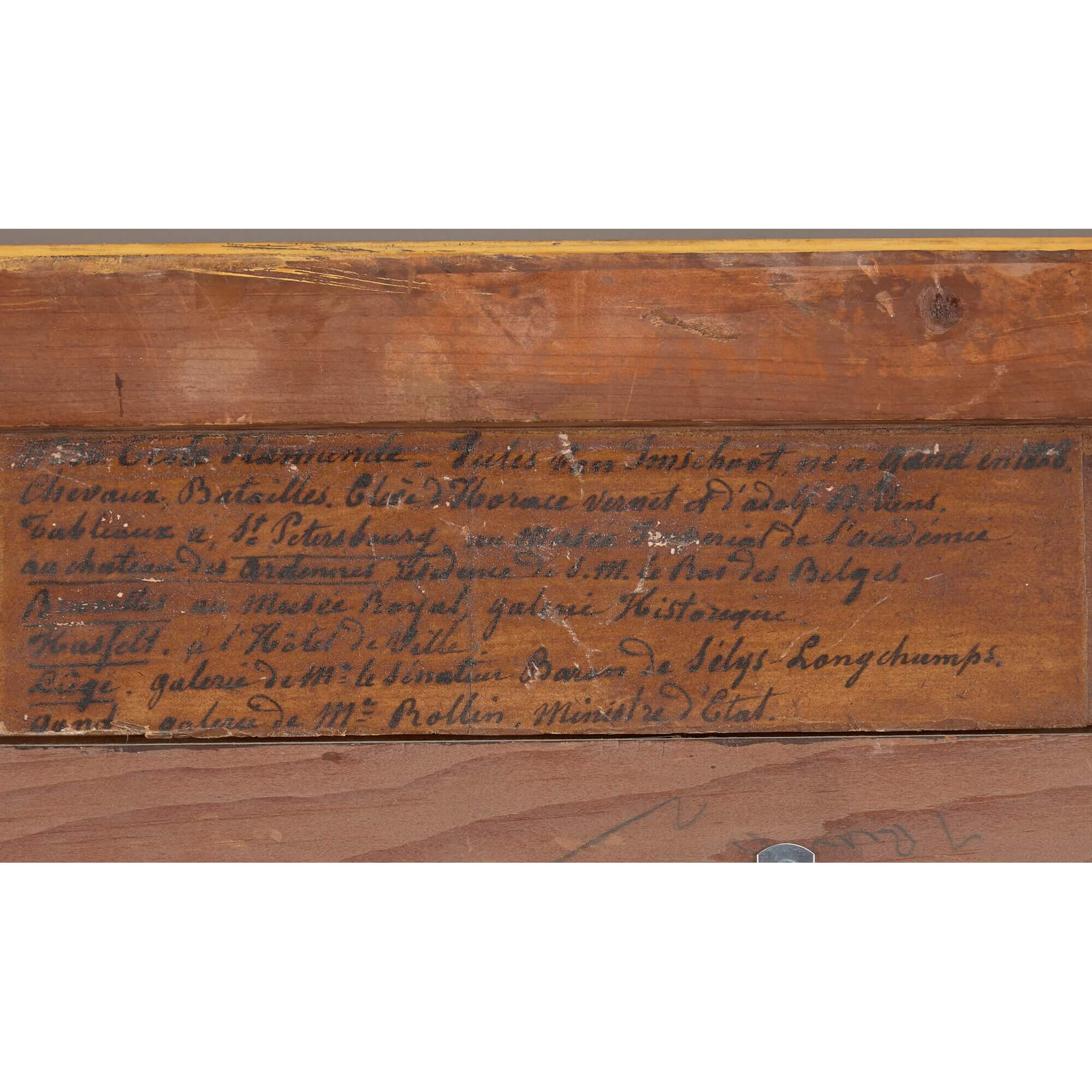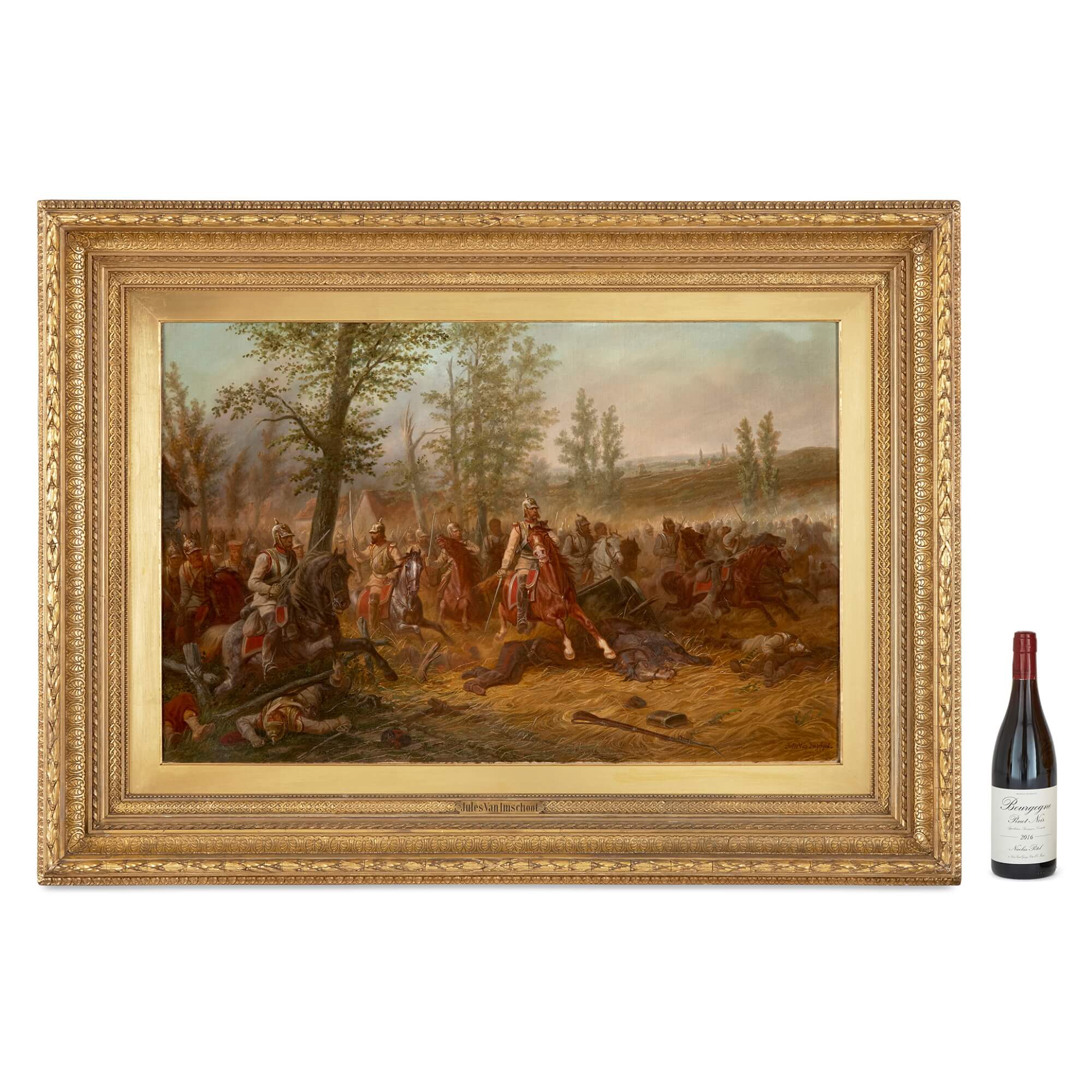Jules van Imschoot's impressive pair of oil-on-canvas paintings, narrating two pivotal battles from the tumultuous Franco-Prussian War of 1870, is an example of the excellent quality of the 19th Century Flemish painting school.
In the first of these two paintings, van Imschoot captures the intensity of the Battle of Gravelotte, when the Prussian army secured a victory against the forces of Napoleon III. Here, the 3rd Regiment of the French Cuirassiers, led by Marshal Bazaine, depicted wearing a resplendent cuirass, retreats under the onslaught of the Prussians.
The painter makes use of light brushstrokes and a muted colour scheme to convey the sense of agitation proper to this historic battle’s environment. Van Imschoot portrays horses, his best-known subject, by applying thin lines of pain and carefully placed points of light, successfully transmitting the animals’ shiny skin and their dynamism, as they are shown jumping over a wall in the chaotic atmosphere of the retreat.
The second artwork takes you to the decisive Battle of Sedan, showcasing the Prussian 8th regiment, wielding swords, contemplating their victory. This watershed moment saw the complete defeat and surrender of Napoleon III's army.
The painter conveys a momentous atmosphere through an impressive use of light. The nebulous landscape features a soft brushwork that merges the sky and foliage, while the dust raised by the charging army is conveyed through a tenuous shade of bright oil colour.
Both paintings are elegantly housed in carved gilt wood frames, featuring a plaque with the artist’s name.
Van Imschoot was a Ghent-born painter and etcher who became known within the Flemish Romanticism art movement for his portrayals of battle scenes, military subjects and depiction of horses.
These large paintings are visibly signed, inscribed and dated, their back featuring an inscription with their subject and the history of the locations they were once housed in, including the Royal Castle of Ardenne, once the summer home of the King of the Belgians, and Easton Neston house, the country seat of the Lords Hesketh.
This pair of compelling pieces shows raw emotion and historical significance, inviting the viewer on a narration through a tumultuous time in European history. Their value as a pair is substantial, showing both fighting sides of this whirlwind war and telling a story of its military ardour. This pair of paintings would provide an elegant and momentous accent to any interior.
Frame: Height 86.5cm, width 116cm, depth 10cm
Canvas: Height 57cm, width 86cm, depth 2cm




